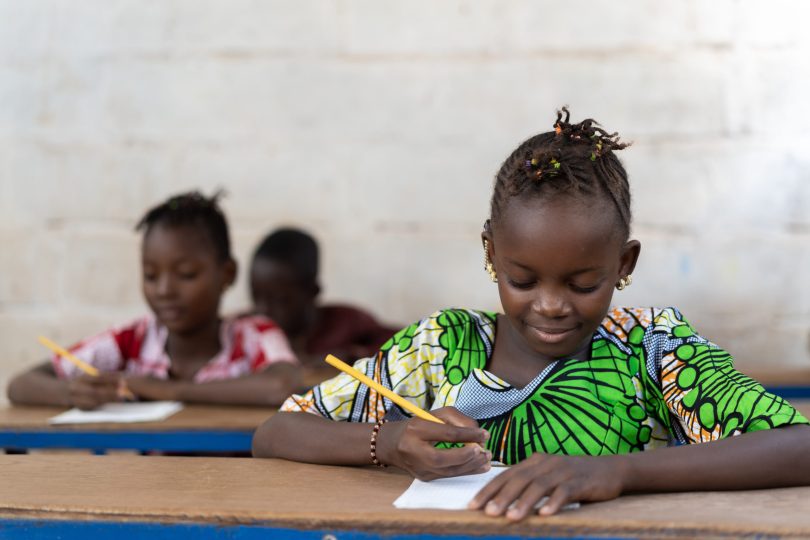Adamawa, otherwise known as the land of beauty has been adjudged one of the states in North Eastern Nigeria committed to improving education funding.
In the last three years, education allocation in Adamawa improved tremendously. Between 2021 and 2022, the state was amongst the states in Nigeria to meet the United Nations Educational, Scientific and Cultural Organisation (UNESCO’s) recommendation to raise funding for education. But increased budgetary allocation to education has yielded little positive outcome.
Recently at a town-hall meeting on the state-level education manifesto for political candidates in Adamawa, five civil society organisations (CSOs) under the Malala Fund Education Champions rated Adamawa State Government low in the girl-child education.
One of the speakers, Jamila Suleiman said the north-east has the highest number of out-of-school children in the world, while Adamawa has the highest number in Nigeria, with girls taking the lump sum. Chief among the causes highlighted during the event was early child marriage.
Child marriage remains one of the most prevalent banes to girl-child education in Nigeria. Child marriage is most prevalent in the North West and North East of Nigeria. According to a report published by Save the Children, 48 per cent of girls were married off by age 15 and 78 per cent were married by age 18.
When these girls marry, they are often forced to drop out of school so they can assume household responsibilities – a denial of their right to education. Girls who leave school have worse health and economic outcomes than those who stay in school, and eventually, their children fare worse as well. Many girls have lost their life dreams to the horrors of child marriage, a violation of their human rights and a menace that endangers girls’ health and well-being.

Though new reports from United Nations International Children Education Fund (UNICEF) assert that there has been 25 million fewer marriages since the last decade, with the total number of girls married in childhood estimated at 12 million per year. But more than 150 million additional girls risk being married before their 18th birthday by 2030.
Poverty, a major drive
Child marriage is the toxic product of poverty and gender inequality. Many poor parents believe that marrying their daughters off will secure their daughters’ future by ensuring that another family will be responsible for their care. Some mistakenly believe marriage will protect their daughters from sexual violence, but the reality is that these girls are placed in the den of greater harm.
Coupled with increasing campaigns against child marriage globally, we have a unique opportunity to speed up efforts to help change the lives of girls and young women all over the world. But this requires a joint effort of every person, across all sectors and at all levels. It requires us to understand the complex drivers behind the practice in different contexts and adapt our interventions accordingly.
Addressing policy deficits – Child’s Right Act of 2003
Earlier in November 2022, the Adamawa government signed into law the Child Protection Act which addresses issues including child abuse, child labour, forced marriage, and other challenges.
With the Act, every girl child in Adamawa is guaranteed schooling up to senior secondary. Section 11, subsection 4 states the right of every child to education. Likewise, section 15 and 16 of the act spell out the government’s stand against early child marriage, however, more efforts are required to operationalise the law in the state.
Asides from the child rights act, Nigerian government has committed to girls’ education by enacting policies such as the Universal Basic Education Act and by recently launching the Nigeria Human Capital Vision, which aims to double female secondary school enrolment and completion rates. Several states have recently shown similar commitment.
However, more needs to be done to ensure a better environment where girls can easily access and complete secondary school education.
While the bulk of these tasks rests on the government and international organisations, here are five ways to end the menace of child marriage:
1. Set an example
Today the world celebrates young Bangladesh teenager, Sharmin Akter who at age 15, courageously resisted her mother’s attempts to marry her off and secured rights to continue her education, setting an example for teenage girls across South Asia facing similar challenges. By being an agent of change yourself, you can become a mentor to young ones and support young people to be agents of change.
2. Support youths to stand for change
Supporting young people can be an effective and empowering process. Many organisations work with young people so they can advocate for change as well as helping to inform the design of programmes that directly benefit their peers. You can also use every medium within your reach. Social media for instance is a powerful tool to air your views against child marriage.
3. Empower girls
You can work directly with girls in your locality to give them the opportunity to acquire skills and knowledge, understand and exercise their rights and develop support networks.
By supporting or actively participating in empowerment programmes for girls, you are ultimately helping them to forge their own pathway in life and encouraging them to become agents of change.
4. Mobilise families and communities
Many families and communities see child marriage as a deeply rooted practice which has been part of their culture for generations. For change to happen, the values and norms which support the practice of child marriage need to shift.
Working with families and the wider community to raise awareness of the harmful consequences of child marriage can change attitudes and reduce the acceptance among those who make the decision to marry girls as children.
5. Report cases of girl’s right violation and domestic violence
Be a voice for these girls and young women, be sensitive to their needs and report cases of maltreatment and all forms of violence to relevant authorities.








